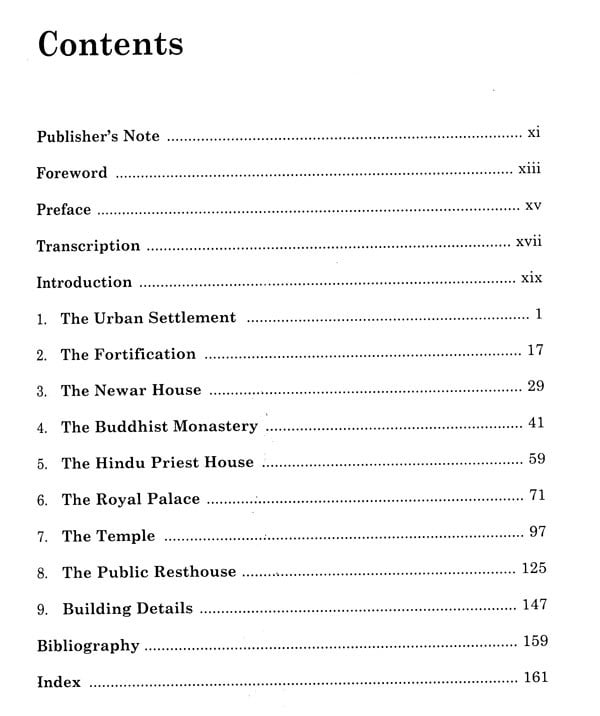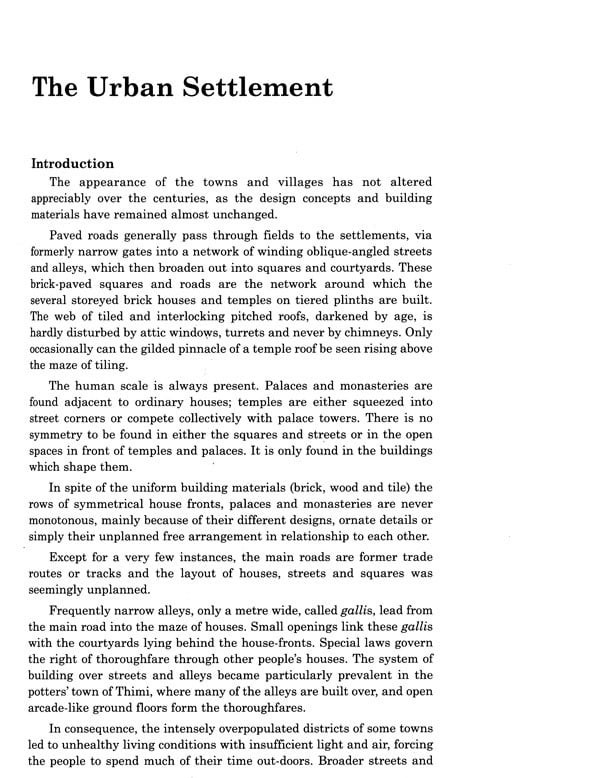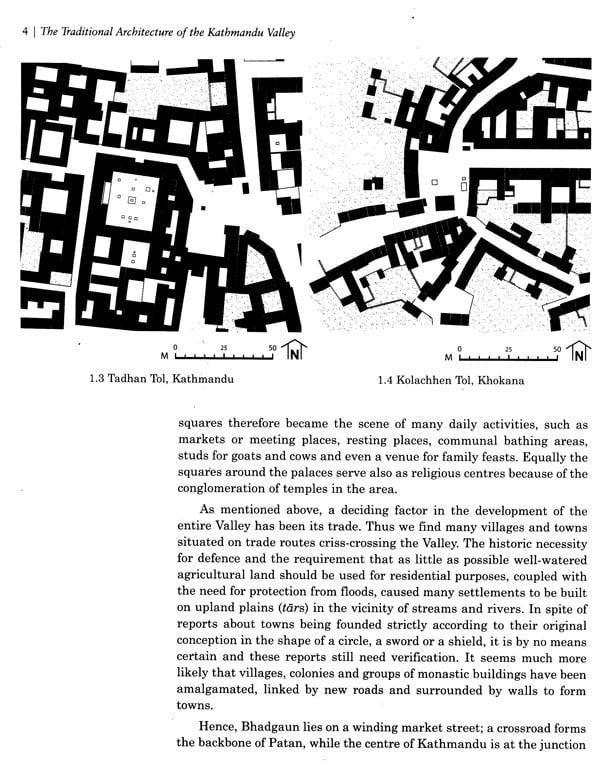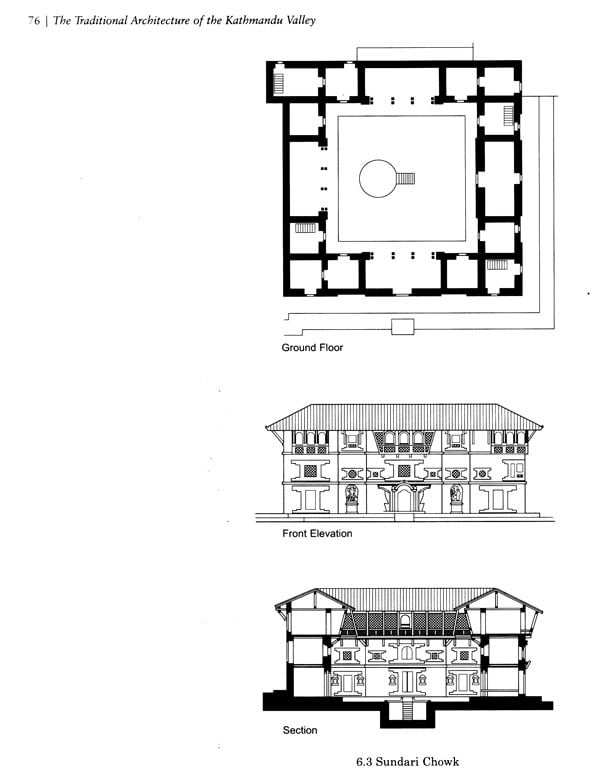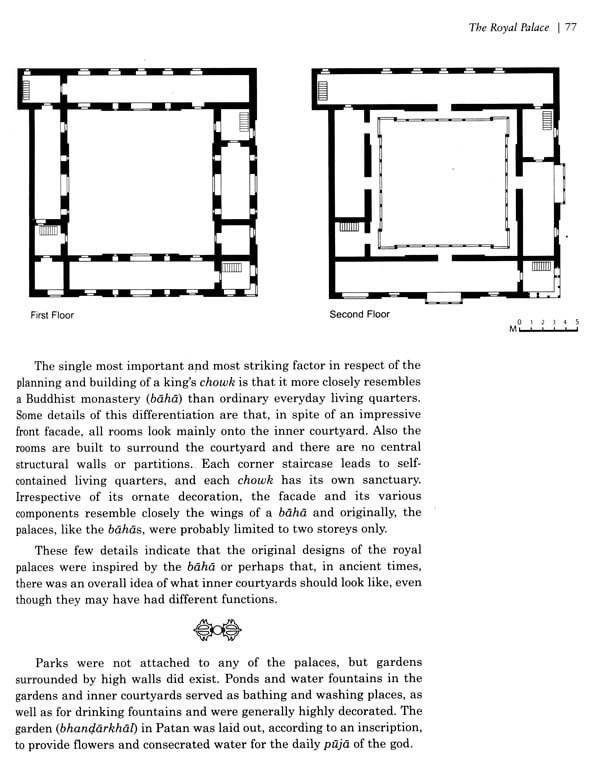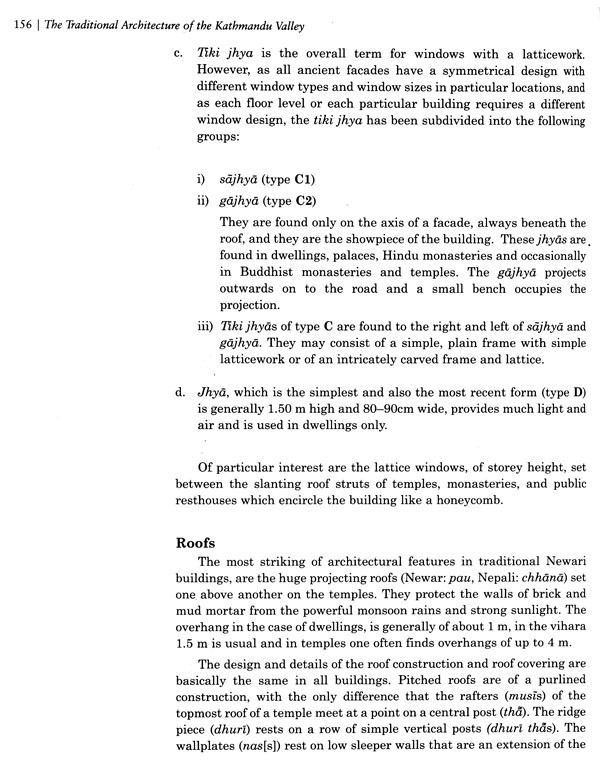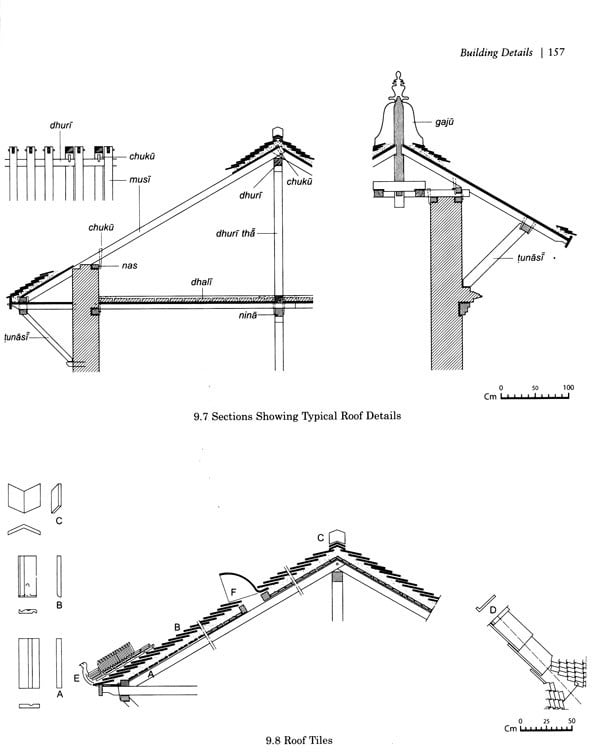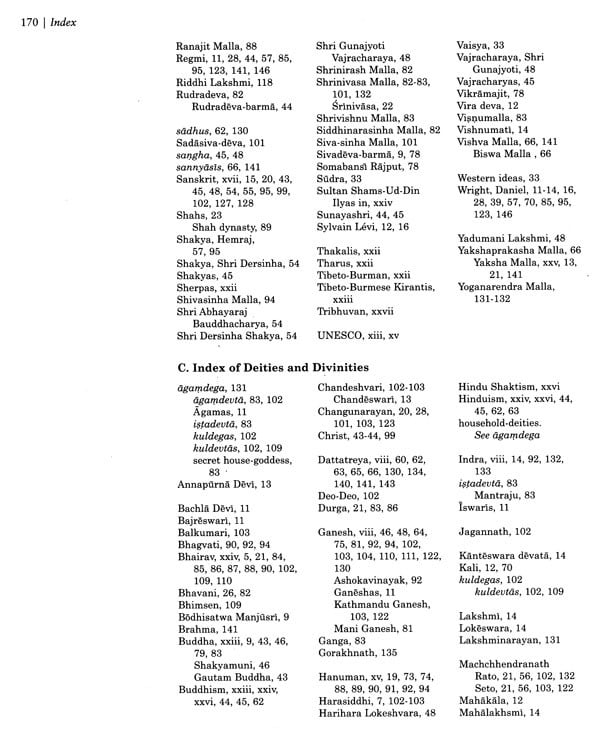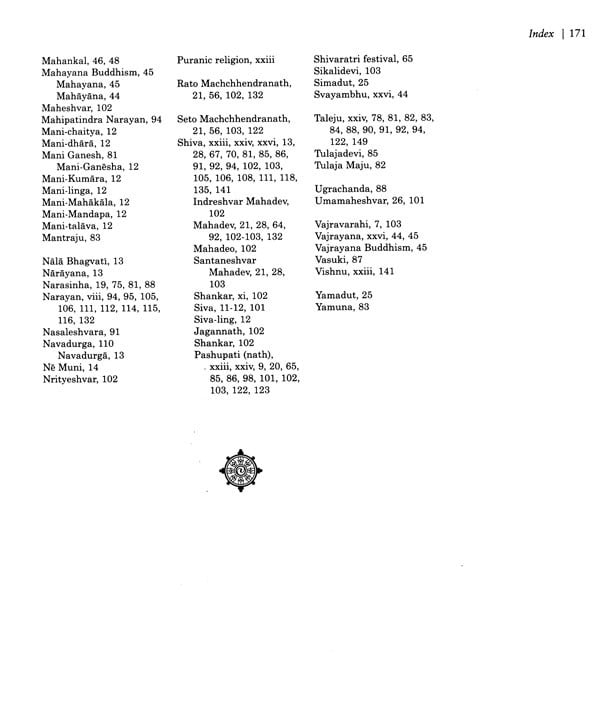
The Traditional Architecture of the Kathmandu Valley
Book Specification
| Item Code: | UAS191 |
| Author: | Wolfgang Korn |
| Publisher: | Ratna Pustak Bhandar, Nepal |
| Language: | English |
| Edition: | 2019 |
| ISBN: | 9789993306306 |
| Pages: | 196 (Throughout B/w Illustrations) |
| Cover: | PAPERBACK |
| Other Details | 11.00 X 9.00 inch |
| Weight | 590 gm |
Book Description
The complexity of the relationship of this architecture with contemporary Nepalese society has also impelled scholars to use new methodologies to study the subject more meaningfully. All these works, aided and abetted by the restorational work on Nepalese monuments in recent years, undertaken by different agencies, such as the Guthi Sansthan, the Department of Archaeology, the Nepal-German Bhaktapur Conservation Project and UNESCO, have succeeded in enhancing our knowledge and appreciation of the traditional architecture of Nepal. A study of this architecture, based on measurements of monuments and represented in line-drawn sketches, is a complete novelty introduced so successfully in this book by the young German architect Wolfgang Korn, and gives the subject a new significance. In fact line drawn illustrations can sometimes prove an even better technique than ordinary photographical clichés for the purpose of architectural illustration, for they can show the details of constructional techniques much more clearly than a mere photograph. Mr. Korn has been making drawings of Nepalese temples, monasteries, palace squares, individual houses and settlement plans of old Newar townships in the Kathmandu Valley for over eight years now. Some of his drawings have appeared in The Physical Development Plan for the Kathmandu Valley published by the Department of Housing and Physical Planning of His Majesty's Government in 1969. His drawings have been in great demand by scholars engaged in research and writing in this field, to illustrate in their work. It was, therefore, quite natural for Mr. Korn to feel inspired to produce an independent work including his drawings. It would be wrong, however, to assume that the merit of his book lies solely with these drawings.
Inspiration to produce this book, however, stemmed from some ten years ago when, as an architectural student, I was forced under the guidance of Professor Jupp Ehren to measure and prepare drawings of buildings in Britany and Greece during semester holiday travels.
As a volunteer with the German Volunteer Service between 1968/69, I was able to help with the preparation of the Kathmandu Valley Report and I was involved in the measurement as well as the compilation of a list of the temples of the Kathmandu Valley, which brought me into close contact with the traditional architecture. Greatly appreciated financial assistance from the Rockefeller Foundation made it possible for me to extend my studies with Dr. Mary S. Slusser in the spring of 1970. For us both these were months of successful exchange of ideas concerning Nepali architecture.
In January 1972, I was able to return to Nepal to work with the German team restoring the Pujahari Math in Bhadgaun, which enabled me to further develop my hobby. As I was uncertain of the duration of my stay in Kathmandu, I decided to restrict my spare time studies to the group of buildings best described as the 'traditional Nepali style' omitting for practical reasons Stupas/Chaityas and temples of the Shikara style from the book but nevertheless hoping to find time to measure and represent them in a later study.
Despite these limitations the possibilities for diversion were still immense, and time and again new discoveries were made. Work on this new material, however, had to be confined to after working hours, and the rare free day.
After a short stay in Germany I returned once again to Nepal in July 1973, this time to assist in the HMG/UNESCO Project for the Conservation of the Hanuman Dhoka Royal Palace in Kathmandu.
Unlike the other smaller states, the Kathmandu Valley has enjoyed a relatively continuous development, despite experiencing different waves of immigrants and devastating invasions. Because of its unique location the Valley has many reasons for attracting immigrants and the interest of neighbouring rulers. Firstly, the Valley contains some of the most important Hindu and Buddhist sanctuaries and monuments in Nepal, and still attracts large groups of pilgrims from faraway places. Secondly, its shape and size distinguishes it from the other mainly north-south oriented narrow river valleys of the midlands of Nepal. The Valley measures about 20 km by 25 km, at an elevation of about 1350 metres. It is a high plateau surrounded by steep and wooded mountains up to 3000 metres high. The floor of the Valley is relatively level, interrupted only by shallow streams. Furthermore, the Valley lies in the temperate warm zone of the Himalayas with a well balanced climate and is very fertile. Thirdly, north of the Valley are two of the most accessible passes (Kuti and Kerung) over the Himalayas to Tibet, thus giving the rulers of the Valley the benefit of controlling and organising the trade between and with both Tibet and India.
However, the extreme topographic and climatic conditions of this area have nevertheless been a controlling influence, keeping the influx of immigrants and invaders at an acceptable level.
Nepal is roughly 800 km in length and 170 km in width and contains most of the Himalayas stretching between Assam, Bhutan and Sikkim in the east, to Kashmir and Jammu in the west. It not only incorporates the highest mountains in the world, but also a 40 km wide strip of lowland belonging to the Gangetic plain.
**Contents and Sample Pages**

